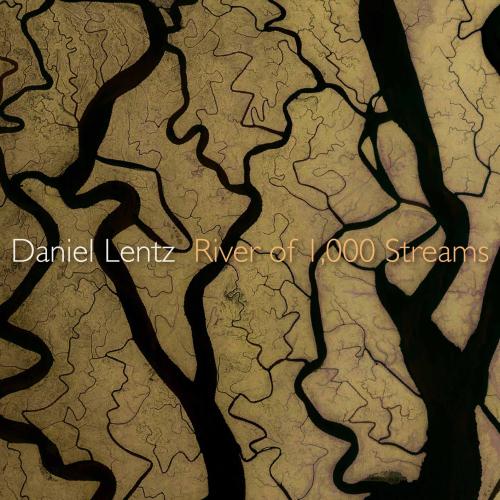
Daniel Lentz: River of 1,000 Streams Vicki Ray
Album Info
Album Veröffentlichung:
2017
HRA-Veröffentlichung:
22.08.2017
Label: Cold Blue Music
Genre: Classical
Subgenre: Minimalism
Interpret: Vicki Ray
Komponist: Daniel Lentz
Das Album enthält Albumcover Booklet (PDF)
- 1 River of 1,000 Streams 28:23
Info zu Daniel Lentz: River of 1,000 Streams
River of 1,000 Streams is a wild new piece for piano and up to 11 „cascading echoes“ that stack up to create dense sonic torrents, as well as more delicate textures. Performed by renowned pianist Vicki Ray, this virtuosic music rumbles from the piano's lowest notes up through its highest in a succession of lovely ever-drifting harmonies. Daniel Lentz has been a fixture on Southern California's new-music scene for more than 45 years, prolifically creating a very personal music that reflects and refracts various experimental and post-experimental trends. Hi smusic is both relentlessly propulsive and lushly beautiful, and it may hint at pop/jazz harmonies or toy with late Romantic gestures, while always offering Lentz's distinct musical vision and reveling in a joy of music-making. Grammy nominated new music champion Vickie Ray, a founding member of the California EAR Unit and Piano Spheres, has performed with the Los Angeles philharmonic and many other groups.
Background: Cold Blue Music has announced a new album, River of 1,000 Streams, by composer Daniel Lentz. Written in 2016, this is a single track of solo piano music inspired by a visit to the Yellowstone River and performed by Los Angeles-based pianist Vicki Ray. From the liner notes, “…River of 1,000 Streams is a virtuosic piano piece in which a live/solo part is expanded by the addition of hundreds of ‘cascading echoes’ (reappearing fragments of music) that appear kaleidoscopically in up to 11 simultaneous layers, creating a thick texture of primarily tremolos that gradually gains in density and volume as rich harmonies climb, in a great arc, from the very bottom to the very top of the keyboard.”
Although simple in concept and consistent in texture, River of 1,000 Streams is always changing and begins with a deep rumbling in the lower registers – almost like the roar of a distant flight of old bombers. There is a strong flowing sensation to this, as if unseen waters are roiling just out of sight. At 2:00 the rolling phrases rise just slightly in pitch, adding a new sense of expectancy. While still very dark and ominous, the expressive playing by Ms. Ray creates a powerful surging sensation; the texture and dynamics here are expertly shaped, and the result is like listening to a restless tide. The repeating patterns move slowly up the piano keyboard and each new set of pitches adds to a sense of evolving motion.
By 6:30 the notes are high enough in pitch to become a bit more distinct in the hearing – less like a roar and more like a patter. The flowing feel remains as the piece proceeds, but the small variations in pitch and the artful shaping of the dynamics keep the listener engaged. By 11:00 the register has moved high enough that there is a greater sense of drama in the notes, even as the passages and textural density remain consistent. At 14:24 a short melodic fragment is heard – like the cresting of a wave – marking the transition to the middle registers. The same pattern of tremolos and trills persist, but the new pitches feel more introspective and less menacing here. By 17:30 the pitch register is high enough to spark a sense of tenuous optimism – as if a ray of the sun is emerging from behind a dark cloud. At 19:00 another short melody fragment is heard, followed by dramatic surges of the low and ominous notes from the opening. The many subtleties in this piece rely on the perceptive playing of Ms. Ray, who manages to perfectly articulate the slight variations in density and texture from moment to moment.
By 20:00 the piece has arrived at the higher reaches of the keyboard with the notes sounding crisper and more distinctly percussive, as if a climax is approaching. At 21:54, another short melody fragment appears while the trills in the upper registers sound like an alarm going off. Middle and lower register trills roll by in accompaniment, adding a sense of layered depth to this section. At 23:30 the high register texture is now very animated and a wash of middle register trills fill in nicely below, adding balance. At 25:00 another short melodic fragment appears and the mix of pitches becomes somewhat more calming. By the finish, the very highest notes on the keyboard trill anxiously but are accompanied by a series of lower surges that offer a comforting sense of closure. At the end, the sound simply ceases, the last notes ringing out and slowly dying away.
River of 1,000 Streams is a prodigious work, in its vision as well as the realization. The subtle variations are always engaging, even as they unfold slowly, and the intricate layering of the various passages is precisely formulated. The performance by Ms. Ray deserves special credit – River of 1,000 Streams will only add to her deserved reputation as one of our premiere interpreters of contemporary music.
Vicki Ray, piano
Vicki Ray
Described as “phenomenal and fearless,” Grammy nominated pianist Vicki Ray is a leading interpreter of contemporary piano music. Known for thoughtful and innovative programming which seeks to redefine the piano recital in the 21st century, Vicki’s concerts often include electronics, video, recitation and improvisation. As noted by Alan Rich, “Vicki plans programs with a knack for marvelous freeform artistry…what she draws from her piano always relates in wondrous ways to the senses.” As a founding member of Piano Spheres, an acclaimed series dedicated to exploring the less familiar realms of the solo piano repertoire, her playing has been hailed by the Los Angeles Times for “displaying that kind of musical thoroughness and technical panache that puts a composer’s thoughts directly before the listener.”
As a pianist who excels in a wide range of styles Vicki Ray’s numerous recordings cover everything from the premiere release of the Reich You Are Variations to the semi-improvised structures of Wadada Leo Smith, from the elegant serialism of Mel Powell to the austere beauty of Morton Feldman’s Crippled Symmetries. Recent releases include David Rosenboom’s Twilight Language on Tzadik Records and Feldman’s For Piano and String Quartet with the Eclipse Quartet on Bridge Records. Her 2013 recording of Cage’s The Ten Thousand Things on the Microfest label was nominated for a Grammy.
Ms. Ray’s work as a collaborative artist has been extremely diverse and colorful. She was the keyboardist in the California E.A.R. Unit and Xtet. Her chamber music contributions to the vibrant musical life in greater Los Angeles include frequent performances on the Dilijan, Jacaranda and the Green Umbrella Series. She performs regularly on the venerable Monday Evening Concert series and was featured in Grisey’s Vortex Temporum on the 2006 celebration of the re-birth of the series. Vicki has been heard in major solo roles with the Los Angeles Philharmonic, the Los Angeles Master Chorale, the San Francisco Contemporary Music Players, the German ensemble Compania, and the Blue Rider Ensemble of Toronto, with whom she made the first Canadian recording of Pierrot Lunaire.
She is currently head of the piano department at the California Institute of the Arts, where she has been on the faculty since 1991. In 2010 she was awarded the first Hal Blaine Chair in Music Performance. For the past eight years she has served on the faculty at the Bang on a Can summer festival at the Massachusetts Museum of Contemporary Art.
Booklet für Daniel Lentz: River of 1,000 Streams











